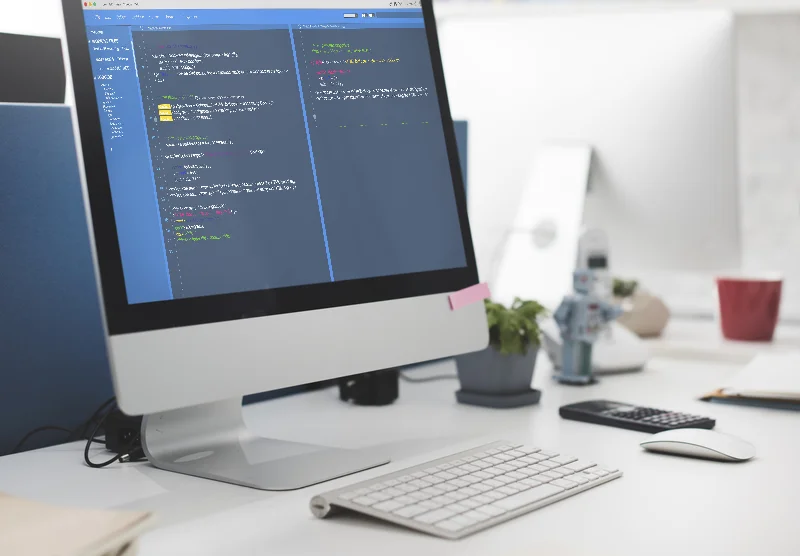Understanding the phrases that are used for describing software program issues is crucial for software improvement. Although all of them comprise considerably similar notions, bugs, defects, errors, faults, and failures have slightly distinct definitions. In contrast, an error refers to a mistake made by a developer when creating code, a bug or defect refers to a flaw or error within the software. For instance, a developer could misunderstand a design notation, or a programmer might mistype a variable name — leading to an Error.

Bugs, defects, errors, failures, and faults have an effect on completely different components of an software and impact its utilization massively. These decelerate the performance and excellence of the software, resulting in customer dissatisfaction. To forestall errors, you have to conduct peer evaluations, validate bug fixes, improve the general quality of the applying, and extra. To forestall failure, you have to affirm the re-testing of the method, review the necessities, categorize the issues, and evaluate the errors. Types of bugs are logical bugs, useful resource bugs, and algorithmic bugs.
Usually in Software Development Life Cycle we use these terms based on the phase. However, these terms are used in a unique way to outline the issues in the code. However, failure can solely be identified within the application when the defective part is executed. If the defective parts have not been executed in any respect, that part can’t trigger any failure. Possibilities are there one defect that may result in one failure or a number of failures. As I mentioned earlier, there is a contradiction within the utilization of Bug and Defect.
Levels Of Testing Software Testing Materials
It is the one that is generated because of the mistaken login, loop or syntax. The error usually arises in software; it leads to a change in the performance of the program. A failure in software program improvement is when a system or software programme falls wanting user expectations or meant necessities.
Several terminologies are used within the field of software development to characterise issues that can arise in software program systems and purposes. These phrases embrace “bug,” “defect,” “error,” “fault,” and “failure,” but they’re regularly used synonymously, which causes misunderstanding amongst failed test meaning stakeholders and builders. In order to successfully communicate and clear up problems in the software program growth industry, it is crucial to grasp the variations between these phrases.
What’s A Failure?
A bug refers to defects which signifies that the software program product or the applying is not working as per the adhered necessities set. When we have any type of logical error, it causes our code to break, which ends up in a bug. It is now that the Automation/ Manual Test Engineers describe this example as a bug. When a failure happens, developers should look into the underlying cause and take the necessary steps to rectify it, corresponding to addressing the flaw or defect that gave rise to the failure. A fault in software program development is a flaw that may make a software program software or system malfunction or give inaccurate results. A flaw is typically caused by a coding or design downside in the software that leads to an sudden behaviour when the programme is run.
Errors can happen at any stage of the software development course of, from necessities gathering to coding to testing. Incomplete or confusing specifications, unanticipated inputs or situations, hardware or different software program issues, programming errors, and different components can all result in bugs. Defects in a product characterize the inefficiency and lack of ability of the applying to satisfy the criteria and stop the software program from performing the desired work. These happen through the software program development cycle by builders.
What’s The Difference Between Error, Bug, And Failure?
To forestall defects, you want to implement out-of-the-box programming strategies and use correct and primary software program coding practices. For instance, defects within the useless code is not going to result in failures. Furthermore, many a time, environmental conditions, together with a strong magnetic field, air pollution, digital fields, radiation burst, and so forth., may cause failure in the firmware or hardware. An arithmetic defect contains defects within the arithmetic expression or discovering solutions to some arithmetic expression in this system. These mistakes are caused mainly by the developers engaged on the software program due to much less knowledge or excess work.
Logical defects come into the picture through the implementation of the code. When a programmer thinks incorrectly concerning the solution or doesn’t understand the requirement clearly, these defects occur. Syntax defects are the common forms of mistakes made whereas writing code. This occurs when a developer or programmer mistakenly escapes a symbol in the program, corresponding to a semicolon (;), whereas writing code in C++. It is described as a problem or error that can trigger the software program to behave in other methods that are not expected by the consumer or intended by the developer. All the above terminology affects and alter totally different parts of the software and differ from each other massively.

If a QA (Quality Analyst) detect a bug, they’ll reproduce the bug and report it with the assistance of the bug report template. This website is utilizing a security service to guard itself from on-line attacks. There are a quantity of actions that might set off this block together with submitting a sure word or phrase, a SQL command or malformed knowledge. If testers find any mismatch in the application/system in testing section then they name it as Bug. Generally, there is a contradiction within the utilization of these terminologies.
Failure can happen when a flaw or defect within the software causes unanticipated behaviour, which prevents it from carrying out the meant operate. Defects, like bugs, may be prevented by implementing various high quality assurance procedures like testing, code critiques, and automated evaluation. Software engineers must address and proper faults as soon as they’ve been discovered in order for the system or utility to function as meant.
- It is the one that is generated because of the mistaken login, loop, or syntax.
- If a developer unable to successfully compile or run a program then they call it as an error.
- Bugs have a vast vary of impacts on software program performance, from small issues that can simply be managed to the massive ones that may make your software impossible to use.
- It is an anomaly in the software program which will trigger it to behave incorrectly, and never based on its specification.
- Defects in a product represent the inefficiency and incapability of the application to fulfill the criteria and prevent the software from performing the specified work.
However, all these differences between bug, defect, errors, faults, and failures slow down the software program’s excellence and efficiency. A bug is a flaw in a software system that causes the system to behave in an unintended manner. A programming error causes a program to work poorly, produce incorrect results, or crash — an error in software or hardware that causes a program to malfunction. To forestall bugs, you have to implement test-driven growth, regulate enhanced code development practices, and more.
These methods and procedures are needed to be aligned with intended software program and hardware specs, programming languages, algorithms, and so forth. A fault is an unintended or incorrect behavior by an application program. If it’s left untreated, it could result in failures within the working of the deployed code. If numerous elements of the applying https://www.globalcloudteam.com/ code depend on one another, a fault is the one which will trigger issues in multiple parts. Typos are also bugs that appear to be tiny points however are capable of creating disastrous results. Even an incorrect quantity or a misplaced letter can cause a drastic change to a program’s meant capabilities.
Bug, defect, error, failure, and fault are often used as synonyms generally phrases. But software program testing has differences according to their behavior. However, implementing appropriate methods can simply keep away from a fault in this system.
For example, in a financial institution utility, if the Amount Transfer module just isn’t working for end-users when the end-user tries to switch cash, submit button is not working. The developer makes an Error/Mistake — the QA engineer doesn’t find a Defect/Bug/Fault — the person detects a Failure. If a Quality Analyst (QA) finds a bug, he has to breed and record it utilizing the bug report template. Hence, these points have to be prevented in any software project instantly, so your software performs optimally and its demand remains at the prime of the market. In addition, a software program bug disrupts an organization’s capacity to interact with users, generate leads, facilitate purchases, and extra. In different words, we are in a position to say that the bug announced by the programmer and inside the code known as a Defect.
A defect can form when a programmer or developer makes some minor or major mistake in the course of the improvement part. From easy annoyances to major failures that might result in information loss, system crashes, or safety vulnerabilities, bugs can have a variety of effects. There are a set of procedures that needs to be in mind while testing the software program manually or by utilizing automated procedures. The primary objective of software program testing is to determine errors, deficiencies, or lacking requirements with respect to actual necessities. Software Testing is Important as a end result of if there are any bugs or errors in the software, they are often identified early and could be solved before the supply of the software product. The article focuses on discussing the difference between bug, defect, error, fault, and failure.
Defect/Bug/Fault — is a situation in a software program product that does not meet a software requirement (as acknowledged within the requirement specifications) or end-user expectations. In simple words, is a deviation between the anticipated outcome and the precise lead to an application or in a module. If a developer finds a difficulty and corrects it by himself in the development part, then it’s called a defect. If the testing team finds a problem during the testing interval, it is referred to as a bug — the result of a coding error or fault.

